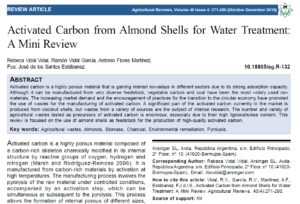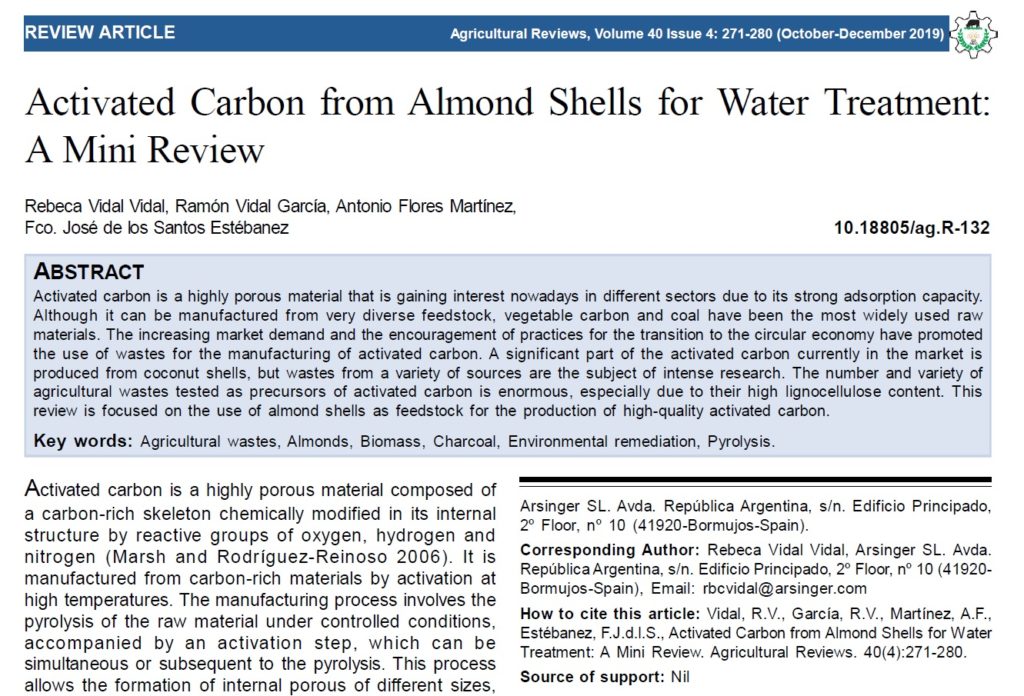
Activated carbon is a highly porous material that is gaining interest nowadays in different sectors due to its strong adsorption capacity.
Although it can be manufactured from very diverse feedstock, vegetable carbon and coal have been the most widely used raw
materials. The increasing market demand and the encouragement of practices for the transition to the circular economy have promoted
the use of wastes for the manufacturing of activated carbon. A significant part of the activated carbon currently in the market is
produced from coconut shells, but wastes from a variety of sources are the subject of intense research. The number and variety of
agricultural wastes tested as precursors of activated carbon is enormous, especially due to their high lignocellulose content. This
review is focused on the use of almond shells as feedstock for the production of high-quality activated carbon.
Final-article-attachemnt-with-doi-R-132
Article: https://arccjournals.com/journal/agricultural-reviews/R-132


